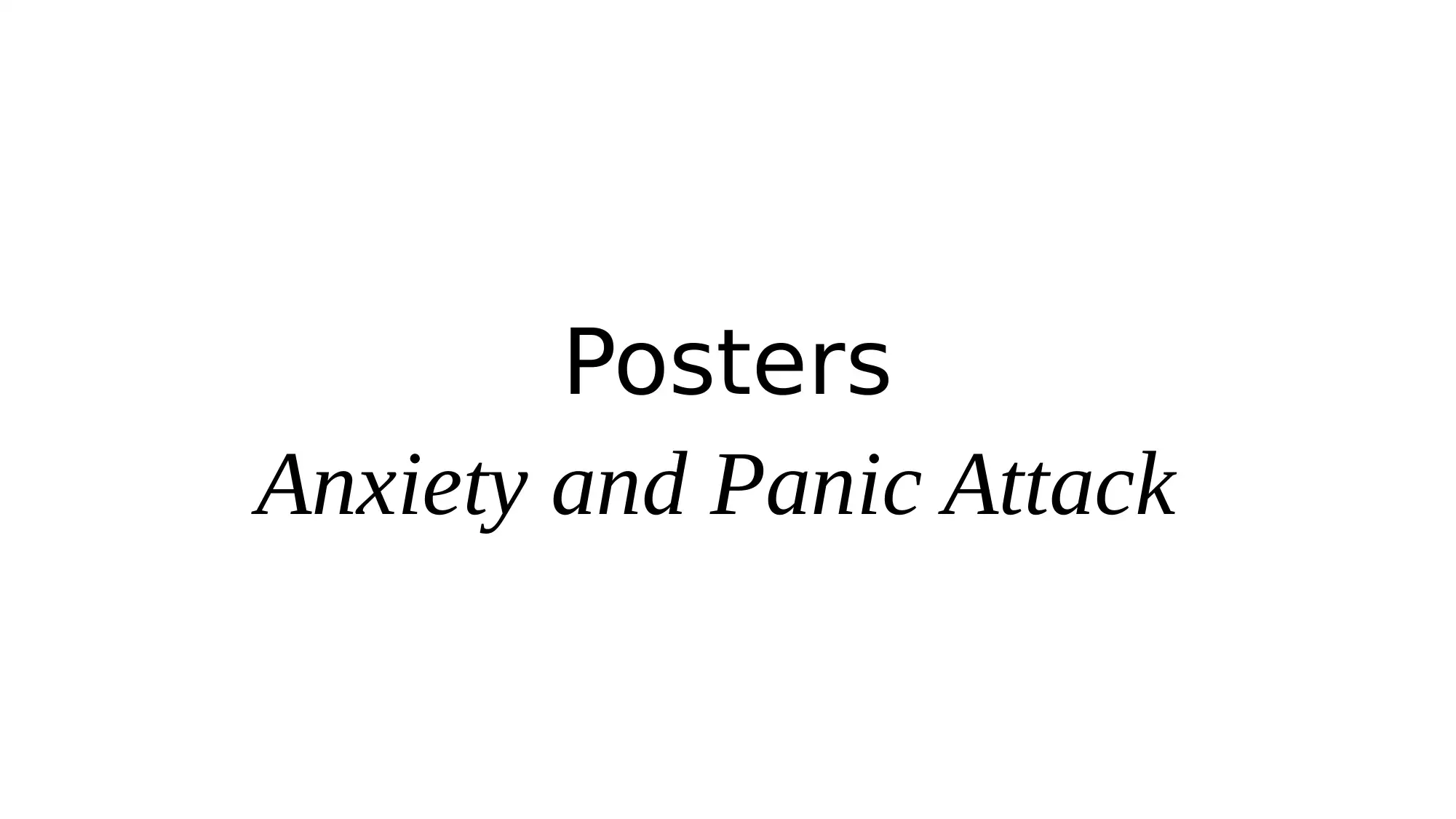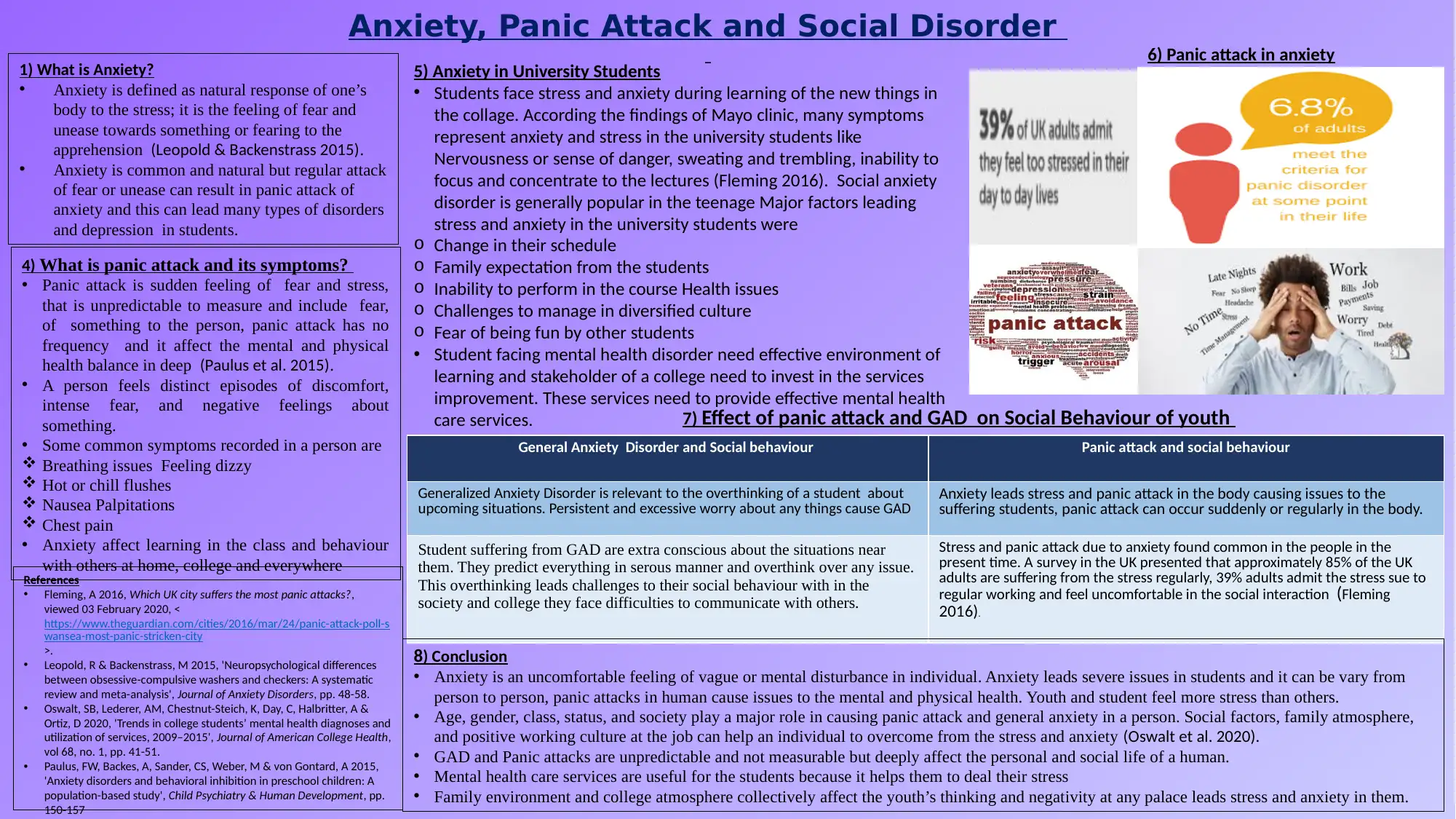Anxiety, Panic Attacks, and Social Disorders in University Students
VerifiedAdded on 2022/08/20
|2
|701
|15
Report
AI Summary
This report delves into the complexities of anxiety and panic attacks, focusing on their symptoms, causes, and effects, particularly within the context of university students. It defines anxiety as a natural response to stress, differentiating it from panic attacks, which are characterized by sudden, intense fear and discomfort. The report explores the physical and mental symptoms of both conditions, including breathing issues, dizziness, and feelings of fear. It highlights the impact of anxiety on learning and social behavior, emphasizing the role of factors like age, gender, and social environment in influencing these experiences. The report also examines the influence of family and college environments on youth mental health, and the importance of mental health services for students. Finally, it provides insights into treatment options, referencing studies and findings related to these conditions and their management.
1 out of 2








![[object Object]](/_next/static/media/star-bottom.7253800d.svg)